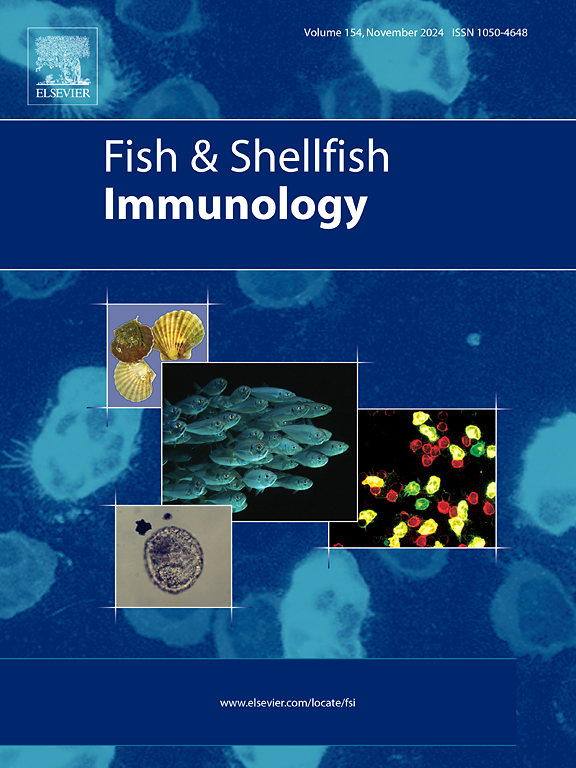Comparison analysis of circulating hemocytes in decapod crustaceans
IF 3.9
2区 农林科学
Q1 FISHERIES
引用次数: 0
Abstract
Hemocytes are the primary immune cells of crustaceans. Few comparison studies have been done among different crustaceans and some key parameters of circulating hemocytes have not been investigated. Here, we compared the circulating hemocytes in six decapod crustaceans, Cherax quadrinatus, Procambarus clarkii, Penaeus vannamei, Penaeus monodon, Eriocheir sinensis, and Scylla paramamosain. Although the hemocytes of different species vary in size, they share common morphological characteristics. Based on their morphological features, circulating hemocytes can be basically classified into granular cells (GCs), semi-granular cells (SGCs), and hyaline cells (HCs). In the six decapods analyzed in this study, the proportion of GCs varied from 10 % to 30 %. P. vannamei, P. monodon, and P. clarkii had fewer GCs in circulation than the other three species. Correspondingly, proliferation was detected only in a small portion of cells in P. vannamei, P. monodon, and P. clarkii under physical conditions. The hemocyte renewal rates for P. clarkii, E. sinensis, and C. quadrinatus were 6.1 %, 5.1 %, and 1.5 % per day, while no steady new hemocyte production was found in S. paramamosain within six days. These data give a general picture of the similarities and differences of circulating hemocytes in decapods and provide a base for an in-depth study of their immune system.
十足甲壳动物循环血细胞的比较分析。
血细胞是甲壳动物的主要免疫细胞。不同甲壳类动物之间的比较研究很少,循环血细胞的一些关键参数也没有得到研究。在这里,我们比较了六种十足类甲壳动物(Cherax quadrinatus、Procambarus clarkii、Penaeus vannamei、Penaeus monodon、Eriocheir sinensis和Scylla paramamosain)的循环血细胞。虽然不同物种的血球大小不一,但它们具有共同的形态特征。根据其形态特征,循环血细胞基本上可分为颗粒细胞(GCs)、半颗粒细胞(SGCs)和透明细胞(HCs)。在本研究分析的六种十足目动物中,GCs 的比例从 10% 到 30% 不等。与其他三个物种相比,凡纳米角鲨、单齿角鲨和克氏角鲨在循环中的 GCs 数量较少。相应地,在物理条件下,凡纳米对虾、单齿对虾和克氏对虾只有一小部分细胞能检测到增殖。P.clarkii、E. sinensis 和 C. quadrinatus 的血细胞更新率分别为每天 6.1%、5.1% 和 1.5%,而 S. paramamosain 在 6 天内没有发现稳定的新血细胞生成。这些数据概括了十足目动物血细胞的异同及其动态变化,为深入研究十足目动物的免疫系统提供了基础。
本文章由计算机程序翻译,如有差异,请以英文原文为准。
求助全文
约1分钟内获得全文
求助全文
来源期刊

Fish & shellfish immunology
农林科学-海洋与淡水生物学
CiteScore
7.50
自引率
19.10%
发文量
750
审稿时长
68 days
期刊介绍:
Fish and Shellfish Immunology rapidly publishes high-quality, peer-refereed contributions in the expanding fields of fish and shellfish immunology. It presents studies on the basic mechanisms of both the specific and non-specific defense systems, the cells, tissues, and humoral factors involved, their dependence on environmental and intrinsic factors, response to pathogens, response to vaccination, and applied studies on the development of specific vaccines for use in the aquaculture industry.
 求助内容:
求助内容: 应助结果提醒方式:
应助结果提醒方式:


